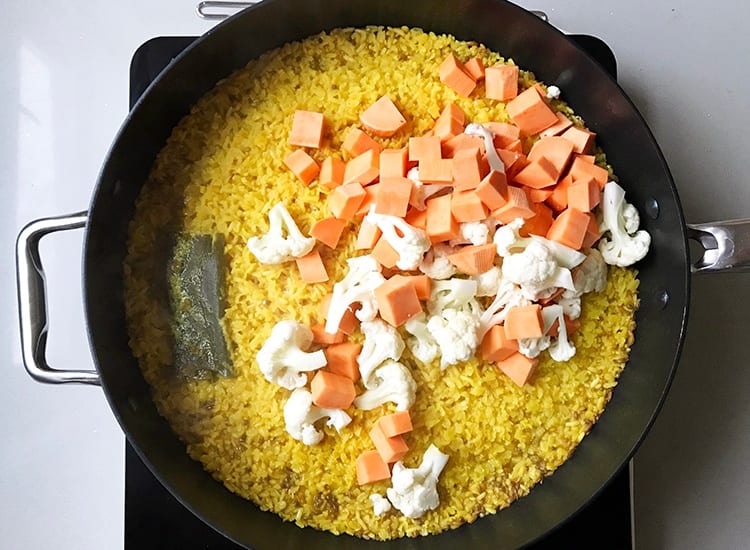Clean 21: 21 Day Detox
Our Signature 21-Day Full-Body Reset
Questions? Ask about this product
Free Shipping On Orders Over $50
Complementary products


Wouldn’t it be amazing if someone handed us a map that illuminated the path to vibrant health and helped us find our sense of purpose in the world? This might sound like a fantasy, but there kind of is. While taking action to discover a life of peace, contentment, and joy is up to the individual, Ayurveda offers guiding principles to help us realize our full human potential. If you can tolerate dairy products, feel free to experiment with using ghee instead of coconut oil after the 21-Day Clean Program.
Ayurveda is made of two Sanskrit words: ayur, which means “life,” and veda, which means “knowledge.” This powerful, ancient system of medicine is thousands of years old, but it remains as relevant as ever today. The tradition is rooted in the belief that we’re all born with a personal blueprint for optimal health. This is what’s called our “constitution,” and it defines who we are from the moment we’re born.
Because a big part of Ayurveda involves embracing the individual, it’s important to understand the doshas – Vata, Kapha, and Pitta. These energetic forces of nature are all essential to our physiology and each plays a functional role in the body. Ideally, we need to maintain an equal balance of all three doshas for optimal health and longevity. When the doshas are out of balance, the disconnect can manifest in physical and behavioral symptoms like constipation, anxiety, joint pain, weight loss, heartburn, skin rashes, and irritability. Fortunately, it’s possible to rebalance the doshas through diet, Activity, and other lifestyle factors.
Kitchari, which translates to “mixture,” is a staple healing dish in Ayurvedic medicine that is balancing for all three doshas. The meal typically includes split yellow mung beans and basmati rice. Both of these grains have been hulled, which makes them easier on the digestive system.
The remaining ingredients in kitchari include a variety of aromatic spices, including coriander, mustard seeds, and turmeric, as well as asafoetida (also called hing). This spice is native to southwest Asia and has an incredibly pungent, sulphuric smell that mellows out when cooked. Asafoetida is often used as a digestive aid in cooking because it helps break down enzymes in gas-producing foods like beans and cruciferous veggies.
As a popular dish in India, there are thousands of versions of kitchari. Most traditional recipes include ghee, which is clarified butter. Get creative with adding your favorite cleanse-approved veggies to make this healing dish perfectly suited to your taste.
Ingredients:
1 cup split yellow mung beans
½ cup brown basmati rice
1 teaspoon coconut oil
½ teaspoon whole mustard seed
½ teaspoon whole fennel seed
1 teaspoon ground cumin
1 teaspoon turmeric
1 teaspoon ground coriander
¼ tsp. fenugreek powder
¼ teaspoon asafoetida (hing)
½ tablespoon fresh ginger, minced
5 cups filtered water
3-inch piece of kombu (optional)
3 cups organic vegetables (we used sweet potato and cauliflower)
2 cups greens (baby kale, baby spinach, or arugula)
½ teaspoon salt, plus more to taste
To serve:
Shredded coconut (unsweetened)
Fresh cilantro
Fresh lemon
Measure the yellow mung beans, rice, and spices. Grate the ginger and break off a small piece of kombu, if using. Kombu is an edible sea vegetable rich in iron and calcium that aids in digestion.

Melt a teaspoon of coconut oil in a large, deep skillet over medium-low heat. Add the mustard seed and fennel seed and cook until fragrant, about 30 seconds.

Add the remaining spices to the skillet, along with the ginger, yellow mung beans, and rice. Stir to coat the yellow mung beans and rice in the spice mixture and sauté for another 2 minutes.

Pour the water into the skillet and add the kombu. Bring the mixture to a boil, cover, and reduce to a simmer. Set your timer for 20 minutes.

After 20 minutes of cooking, add any hardy vegetables you like – like sweet potato, beets, or carrot. Replace the lid and continue to cook until vegetables are tender, about 10 minutes more.

Remove the skillet from heat. Season the kitchari with salt and stir in the leafy greens.

To serve, ladle the kitchari into bowls and top with shredded coconut, fresh cilantro, and lemon.

Recipe and photography by Kate Kasbee
If you enjoyed this article, you might also like A Chickpea Scramble That Is Egg-Free But Protein-Packed